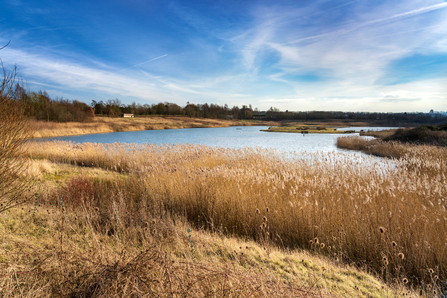Bolton-on-Swale Lake, Richmond
A former sand and gravel quarry, this wetland reserve is a haven for birdlife with two hides giving great views over the lake. Wading birds and wildfowl are the stars of the show, with huge numbers of ducks wintering here, including nationally important numbers of wigeon, along with goldeneye, pochard, tufted duck, teal and shoveler. Large numbers of curlews also winter in the area, and can often be seen feeding on the grassland around the lake.




